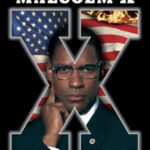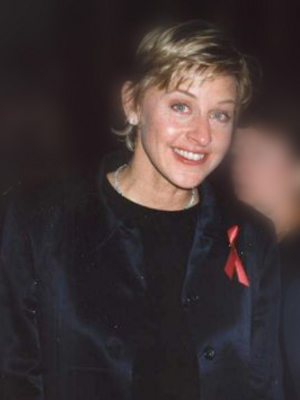With any good story or motion picture film, there comes symbolism. Symbolism can help to create a certain atmosphere, help to explain plot twists, or simply add an interesting new way to look at something. The movie “The Sixth Sense” shows symbolism doing all of these things. The film uses color, line repetition, and visual effects to illustrate important ideas.
“The Sixth Sense” is a movie that was directed by M. Night Shyamalan (imdb.com). It appeared in theaters in 1999. The plot is as follows: a child psychologist (Malcolm Crowe) is wounded severely by a former patient of his. The name of the patient is Vincent Grey. After shooting Crowe in the stomach, Grey turns the gun on himself. For months, Crowe can think of little else. Suddenly, he is presented with the opportunity to work with Cole Sear, another troubled child. Because Sear reminds him so much of Vincent Grey, Crowe decides to take his case.
The whole matter is complicated by the fact that Sear claims to see the ghosts of dead people. While Crowe tries to work with Sear, Crowe’s marriage deteriorates. Finally, Crowe helps Sear to solve his problem. Instead of being afraid and running from the ghosts, they decide Sear should try to help them so they can move on. When the idea works, Crowe turns his attention to his marriage. In a shocking plot twist, it is revealed that Crowe was killed the night Vincent Grey shot him, and has been dead for almost the entire movie. The final scene shows Crowe’s acceptance of the fact (The Sixth Sense).
Throughout the movie, there is much symbolization. There is both visual and audible forms of symbolism; visual symbolism being the more common of the two. The most prominent and easy to recognize examples have to do with color. Because it is easiest to pick up on visual symbolism, Shyamalan was generous with it through the entire film. There was a limited use of the color white, but the color Shyamalan chose to use for significant moments was red.
The color red is already associated with negative emotions or events. Often one associates the color red with anger or rage, embarrassment, or pain. This is seen in literature quite frequently with the common use of lines like “he went red with rage,” or “her face flushed red with embarrassment.” Red is an easy-to-see color with pre-existing negative connotations, and as such, it is the perfect choice to highlight important events in a movie. In “the sixth sense,” the color red is seen before any frightening scene. There are a few specific examples that are very noticeable.
For instance, Cole Sear made a tent that he used to hide in when he saw a ghost in his house. In one scene, a bit of the tent came undone, thus not keeping the ghosts out. When Sear tried to go to his tent, he found a ghost inside. The tent was red. Another example is seen in a scene where Sear goes to a birthday party. At the party, boys from Cole’s school see him looking into a storage space worriedly. In truth, Cole was seeing a ghost. The other boys did not know about Cole’s condition, and made fun of him. They eventually threw him into the storage space where he began to scream. In that scene, Cole’s sweater was red, and there was a red birthday balloon (wikipedia.com).
The other color used to illustrate significance is the color white. In the beginning of the movie, one may note that Vincent Grey has a streak of white in his hair. Later in the movie, it is shown that Cole Sear has the same white streak of hair. This is used to symbolize the connection between the two characters, and their cases.
There are clearly myriad examples where color is used to portend a significant event. However, color is not the only symbolism in the movie. There is another example of visual symbolism that is very evident throughout the movie.
It is a short scene, in which Cole’s mother, Lynn Sear, examines the pictures of Cole that are hanging up in her hallway. She notices that in each picture, there is an inexplicable whitish, almost ghostly glow near Cole (Morris). This is symbolic of Cole’s ability to see and communicate with otherworldly people. There is one more example of visual symbolism in “The Sixth Sense.”
Every time there is a ghost present in the room, the temperature drops significantly. This is shown by shots of a thermostat, and, more chillingly, the breath of living characters. When there is a ghost present, living characters can see their breath. This is seen in several different places through the movie, which sets the stage for the surprising twist at then end of the movie. It is made clear that whenever a character sees his breath, it means that a ghost is present. In the final scene, Crowe is trying to make peace with his wife. Through the movie, their relationship is seen getting progressively worse. She never speaks to him anymore, presumably because she feels that she is not at the top of his priority list any longer. In the last scene, Crowe’s wife is shown sleeping in a chair, a video of the Crowes’ wedding playing on the television.
Crowe comes in and begins to speak to her. She replies in her sleep-the first communication between since the beginning of the movie. As Crowe moves closer to his wife, he sees that her breath is coming out in little clouds. This is the shocking twist. Malcolm Crowe has been dead since Vincent Grey shot him in the stomach. If the idea of being able to see breath had not been firmly established as symbolizing a ghost, the last scene of the movie would have proved to be completely ineffective.
The final type of symbolism that is easily recognizable in the movie is not visual, but audible. The ingenious use of line repetition is makes the continuity of the story perfect. For example, before turning to violence, Vincent Grey says to Malcolm Crowe “I don’t want to be afraid anymore.” Later, Cole Sear says the same thing to Crowe. This symbolizes the strong connection between Grey and Sear in the eyes of Crowe. Another line repeated comes from Cole’s mother, Lynn. She twice uses the line “Look at my face, Cole…” this line is a bit more difficult to interpret, but it seems as though it is used to symbolize the history between mother and child. It lends itself to the feeling that it is a phrase that has been frequently used for a long time between the two. The line has an almost calming effect on Cole. At the very least, it makes him really listen and believe what his mother is saying.
It is clear that the use of symbolism is important to the film. Not only does the symbolism tie together important aspects of the film, but it allows for the surprise twist at the end. Both of these things are important, but there is one more thing that the symbolism allows for: replay value. As important as it is for the symbolism in “the sixth sense” is in regard to story line, it is possible that the most important thing that it does is encourages viewers to watch it over and over again. It is the subtle symbolism that inspired many people to buy the film, or to see the picture multiple times in theaters, and that in turn brought in more money for the film.
There are many good reasons to use symbolism in a movie. To be effective, methods of displaying symbolism should be varied throughout the film. Shyamalan managed to hit a perfect balance throughout the entire movie. By using many different types of symbolism, “The Sixth Sense” managed to present a well-rounded, intriguing story line.
Works Cited
1. International Movie Database. The Sixth Sense. 18 Apr. 2001. 9 Dec. 2006 .
2. Morris, Wesley. “Sixth” a Chilling Look at Haunted 8-year-old. 6 Aug. 1999. 9 Dec. 2006 .
3. The Sixth Sense. Dir. M. Night Shyamalan. Perf. Bruce Willis, Haley Joel Osment. 1999. DVD. Buena Vista, 1999.
4. Wikipedia, the free encyclopedia. The Sixth Sense. 6 Dec. 2006. 9 Dec. 2006 .




